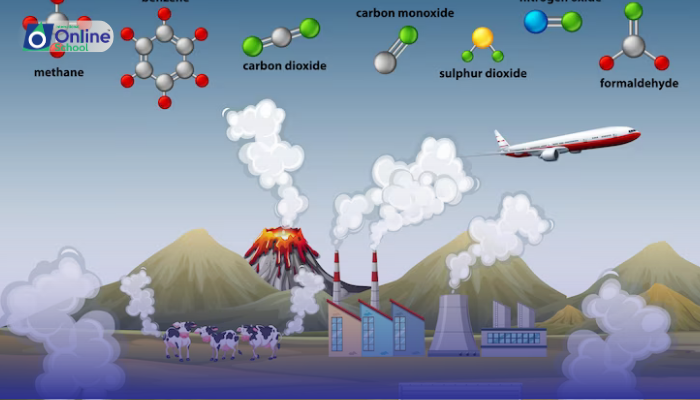
Learning Outcomes
By the end of this lesson, students will be able to:
i. Define and explain diffusion, the random movement of gas molecules from an area of high concentration to an area of low concentration.
ii. Describe the factors that influence the rate of diffusion, including concentration gradient, molecular size, and temperature.
iii. Differentiate between diffusion and effusion, recognizing the similarities and differences in these gas transport phenomena.
iv. Explain the concept of gas pressure, the force exerted by gas molecules against the walls of a container.
v. Recognize the relationship between gas pressure, volume, and temperature, understanding how changes in one affect the others.
Introduction
The world around us is filled with gases, their invisible presence shaping our environment and influencing various processes. Gases exhibit unique properties that distinguish them from other states of matter, allowing them to move freely, interact with their surroundings, and play crucial roles in various phenomena.
i. Diffusion: A Random Dance
Diffusion, a fundamental property of gases, is the random movement of gas molecules from an area of high concentration to an area of low concentration. This movement arises from the constant motion of gas molecules, which collide with each other and scatter in all directions.
Factors Influencing Diffusion Rate
Several factors influence the rate of diffusion:
Concentration Gradient: The larger the concentration gradient, the faster the diffusion of molecules.
Molecular Size: Smaller molecules diffuse faster than larger molecules due to their greater mobility.
Temperature: Higher temperature increases the kinetic energy of gas molecules, leading to faster diffusion.
ii. Effusion: A Sieving Affair
Effusion, another gas transport phenomenon, is the escape of gas molecules through a small opening into a vacuum. Similar to diffusion, effusion involves the movement of gas molecules from an area of high concentration to an area of low concentration.
Differences between Diffusion and Effusion
While diffusion and effusion share similarities, they differ in one key aspect:
Diffusion: Diffusion occurs in the presence of other gas molecules, while effusion occurs into a vacuum.
iii. Gas Pressure: A Force to Be Reckoned With
Gas pressure, a fundamental property of gases, is the force exerted by gas molecules against the walls of a container. This pressure arises from the constant collisions of gas molecules with the container walls, generating a force.
iv. Relationship between Gas Pressure, Volume, and Temperature
The relationship between gas pressure, volume, and temperature is governed by gas laws, such as Boyle's law, Charles's law, and Gay-Lussac's law. These laws provide insights into how changes in one variable affect the others.
Examples of Gas Properties in Action
Perfumes: The diffusion of fragrant molecules from a perfume bottle allows us to smell the perfume from a distance.
Cooking: The effusion of gas molecules from a stovetop burner ignites the gas, providing heat for cooking.
Balloon Inflation: The pressure exerted by gas molecules inside a balloon causes it to expand and take shape.
The properties of gases, including diffusion, effusion, and gas pressure, play a crucial role in shaping their behavior and influencing their interactions with the environment. By understanding these properties, we gain valuable insights into the gaseous world, appreciating the intricate dance of gas molecules and the forces that govern their movement.